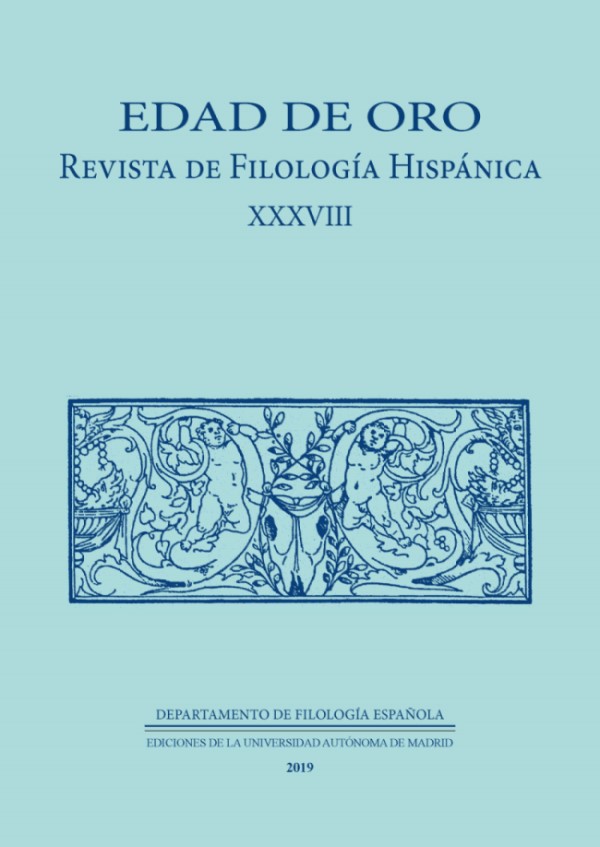Behind the Witchcraft Conspiracy in Cartagena de Indias (1634-1636): Retractions, Prison Spaces, and Torture
Keywords:
witchcraft conspiracy, retraction, torture, Cartagena de IndiasAbstract
Between 1634 and 1636, the inquisitors found out a «conspiracy of witchcraft» in the Tribunal of the Holy Office in Cartagena de Indias. According to them, the conspiracy consisted of the retractions of several female prisoners related to their previous confessions of having been involved witchcraft, while they were in the penance prison. The retractions threatened the Inquisition’s legitimacy insofar as they undermined the 1633 witchcraft trials. As a consequence, the inquisitors carried an exhaustive investigation to control and reveal the origin of the retractions and the development of the conspiracy. This article draws on the records of Rufina and Justa —two free mulatto sisters— who participated in the conspiracy. It explores the extent to which the architectural layout of the Inquisition’s prisons influenced the creation and rupture of the alliances that briefly allowed prisoners like Rufina and Justa to contest the legitimacy of their own witchcraft trials. In addition, it analyzes the physical challenges these women faced as prisoners, and analyze the inquisitors’ use of torture as a means to solve the conspiracy.
Downloads
References
Barbeito, Isabel (ed.) (1991). Cárceles y mujeres en el siglo xvii. Madrid: Castalia.
Bennassar, Bartolomé (1981). «Inquisición o la pedagogía del miedo». En Bartolomé Bennassar (ed.), Inquisición española: Poder político y control social. Javier Alfaya (trad.). Barcelona: Crítica, pp. 94-125.
Boyle, Margaret (2014). Unruly Women. Performance, Penitence and Punishment in Early Modern Spain. Toronto: University of Toronto Press.
Ceballos, Diana Luz (1994). Hechicería, brujería e Inquisición en el Nuevo Reino de Granada: Un duelo de imaginarios. Bogotá: Universidad Nacional de Colombia.
Ceballos, Diana Luz (2002). «Quyen tal haze que tal pague»: sociedad y prácticas mágicas en el Nuevo Reino de Granada. Bogotá: Ministerio de Cultura.
Cobo Torres, Javier (1996). Fundación para la conservación y restauración del patrimonio colombiano. Proyecto de restauración arquitectónica el palacio de la Inquisición en Cartagena de Indias. Cartagena: Biblioteca Luis Ángel Arango-Libros Raros y Manuscritos.
Cuadro García, Ana Cristina (2005). «Las cárceles inquisitoriales del tribunal de Córdoba». Hispania, LXV/2, n.º 220, pp. 443-464.
Germeten, Nicole von (2013). Violent Delights, Violent Ends: Sex, Race and Honor in Colonial Cartagena de Indias. Albuquerque: University of New Mexico Press.
Gómez, Pablo (2013). «The Circulation of Bodily Knowledge in the Seventeenth-century Black Spanish Caribbean». Social History of Medicine 26, 3, pp. 383-402.
Graff Zivin, Erin (2014). Figurative Inquisitions. Conversion, Torture, and Truth in the Luso-Hispanic Atlantic. Evanston: Northwestern University Press.
Henningsen, Gustav (2004). The Salazar Documents: Inquisitor Alonso de Salazar Frías and Others on the Basque Witch Persecution. Boston: Brill.
Heras Santos, José Luis de las (2014). «Women’s Reformatories and Prisons in the Early Modern Age: Morality, Welfare and Repression of Women in the 17th and 18th Century». Procedia - Social and Behavioral Sciences, 161, pp.176-183.
Kamen, Henry (2014). The Spanish Inquisition: A Historical Revision. New Haven: Yale University Press.
Las siete partidas del rey don Alfonso el sabio, cotejadas con varios códices antiguos por la Real Academia de la Historia (1807). Madrid: Imprenta Real, t. III.
Marco Dorta, Enrique (1988). Cartagena de Indias, puerto y plaza fuerte. Madrid: Taller de Gráficas Cóndor.
Maya Restrepo, Luz Adriana (2003). «Paula de Eguiluz y el arte del bien querer, apuntes para el estudio de la sensualidad y del cimarronaje femenino en el Caribe siglo xvii». Historia Crítica, 24, pp. 101-124.
McKnight, Kathryn Joy (2016). «Performing Double-Edged Stories: The Three Trials of Paula de Eguiluz». Colonial Latin American Review, 25:2, pp. 155-156.
Navarrete, María Cristina (1995). Prácticas religiosas de los negros en la colonia: Cartagena, siglo xvii. Cali: Universidad del Valle.
Porto Cabrales, Raúl (2010). La Inquisición en Cartagena de Indias. Medellín: Cámara Colombiana del Libro.
Rocha, Carlos Guilherme (2014). «Entre Tratos e Desacatos: Fraudes, Denúncias e Comércio Ultramarino no Conflito entre o Governador Francisco de Murga e o Tribunal da Inquisição de Cartagena das Índias (1629-1636)». Tempos Gerais- Revista de Ciências Sociais e Historia-UFSJ, 5, pp. 132-146.
Rodríguez-Salade Gomezgil, María Luisa (2009). Cinco cárceles de la Ciudad de México, sus cirujanos y otros personajes: 1574-1820. Miembros de un estamento profesional o de una comunidad científica?. Ciudad de México: Universidad Nacional de México/Instituto de Investigaciones Sociales.
Sánchez Michel, Valeria (2008). Usos y funcionamiento de la cárcel novohispana. El caso de la Real Cárcel de Corte a finales del siglo xviii. Ciudad de México: El Colegio de México/Centro de Estudios Históricos.
Splendiani, Anna María (1997). Cincuenta años de Inquisición en el Tribunal de Cartagena de Indias 1610-1660. Bogotá: Centro Editorial Javeriano.
Scarry, Elaine (1985). The Body in Pain. The Making and Unmaking of the World. New York/Oxford: Oxford University Press.
Schorsch, Jonathan (2009). Swimming the Christian Atlantic: Judeoconversos, Afroiberians and Amerindians in the Seventeenth Century. Boston: Brill.
Silverman, Lisa (2001). Tortured Subjects: Pain, Truth, and the Body in Early Modern France. Chicago: University of Chicago Press.
Tejado Fernández, Manuel (1954). Aspectos de la vida social en Cartagena de Indias durante el seiscientos. Sevilla: Escuela de Estudios Hispano-Americanos.
Van Deusen, Nancy E. (2001). Between the Sacred and the Worldly: The Institutional and Cultural Practice of Recogimiento in Colonial Lima. Stanford: Stanford University Press.
